Asthma
- You may have visited a hospital recently because of asthma.
- If you haven’t, you are lucky. If you have, an inhaler is not exactly new to you, isn’t?
- Unless you use that device properly, chances are that you will need emergency treatment soon (CREVELING, SLUTSKY & ANTIS 2003).
- We will engage you on how education can improve inhaler technique and clinical outcomes.
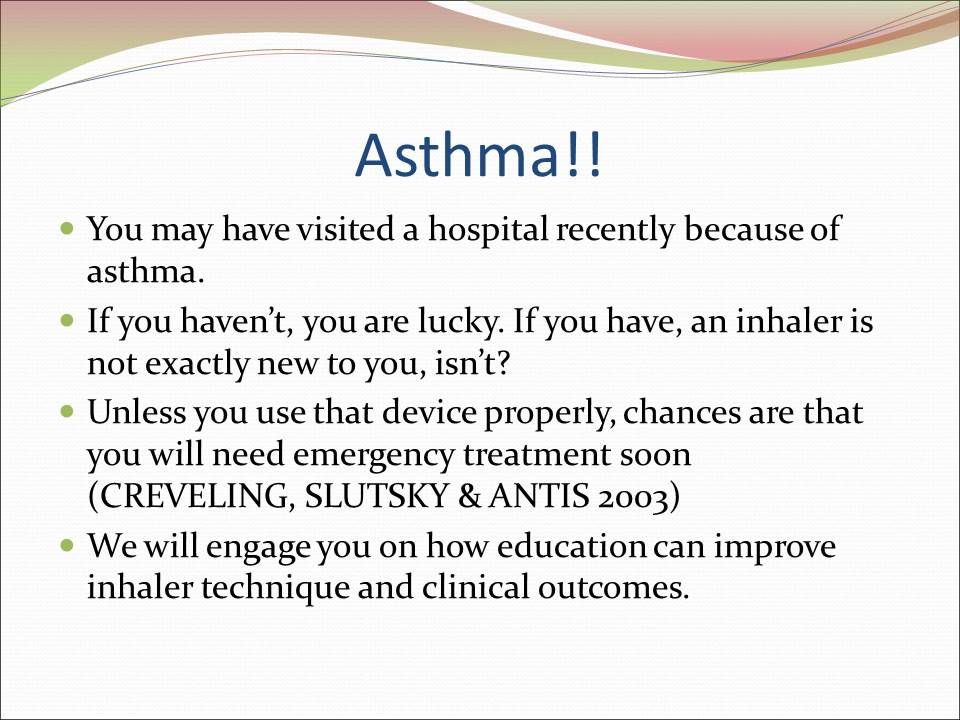
Education and Inhaler Technique
- Trials from experts show that if patients are given proper instructions by professional, their inhaler techniques improve (WITTMAN 2011).
- Out of 100 people, 25 have never been instructed verbally on proper techniques (PERRY, POTTER & OSTENDORF 2013).
- The other 75 were given instructions but in a rushed manner (HESSON 2012).
- Out of 100 professionals, only 11 follow up their patients after training (WITTMAN 2011).
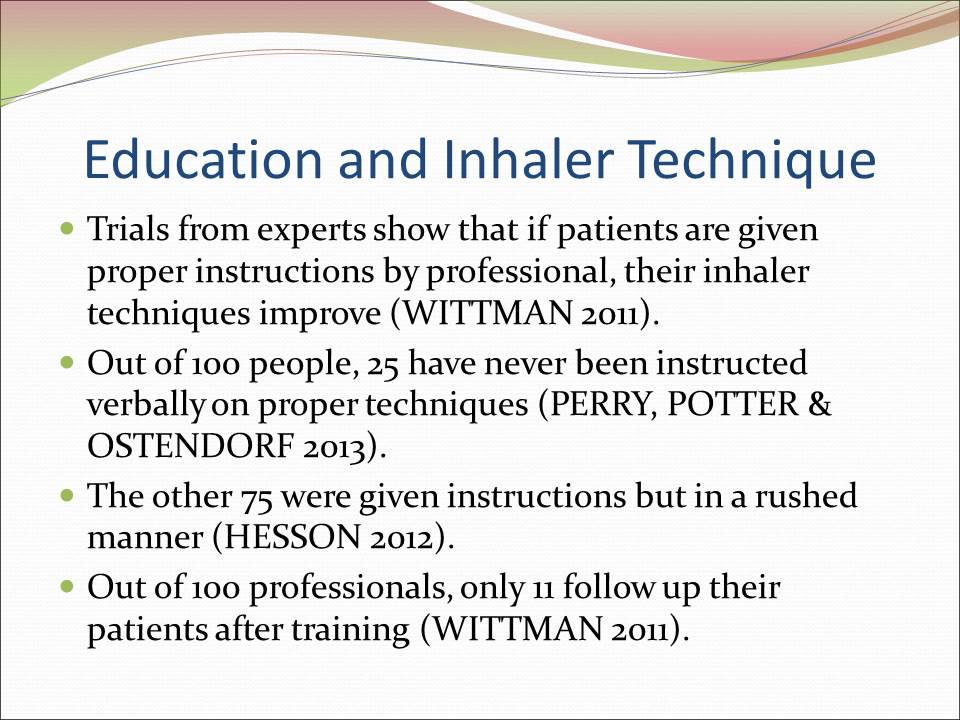
Can Community pharmacists help in this?
- Yes, they can (KOBAK 2002), but how?
- If you are professional, make sure you know the proper technique before you teach others.
- 30-85 professionals do not know how to use it properly (GARG & ALIÓ 2011). Update your skills regularly.
- Second, it is your duty to ensure that an inhaler is appropriate to a particular patient. Why do you think this is necessary?
- Third, ask the patient to demonstrate proper techniques as you watch them.
- Fourth, do not just give leaflets, explain verbally. Few people enjoy reading.
- Fifth, follow you explanation with a demonstration. People remember more what you do, not what you say.
- Sixth, as crazy as it may sound, repeat instructions. Boring? But it helps (POLLAK & GUPTON 2002).
- In all these process, maintain a good rapport with the patient (CONTE 2009).
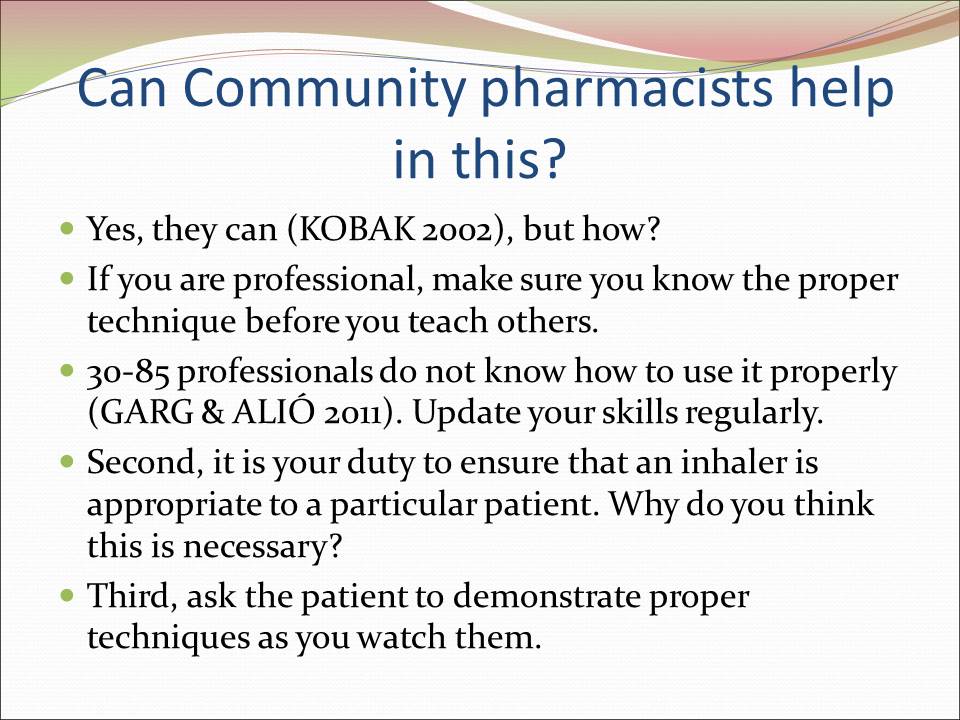

Simple Steps
Now you have the inhaler, you know what to do, do it here (MORRISON 2008):
- Inhalers have a cap, remove it.
- Ensure you shake the inhaler, not violently though! Why do you have to shake it?
- Hold the mouthpiece with a finger.
- Move it to you close to your mouth and exhale all the air in your lungs.
- Release the mouthpiece on you mouth and inhale, deeply (HESSON 2012).
- Make sure your breath is deep enough to suck in the dose.
- Hold your breath.
- Now breath out and repeat the process.
- Very Important. ASK THE PATIENT TO REPEAT THAT! (SILBERMAN 2006).
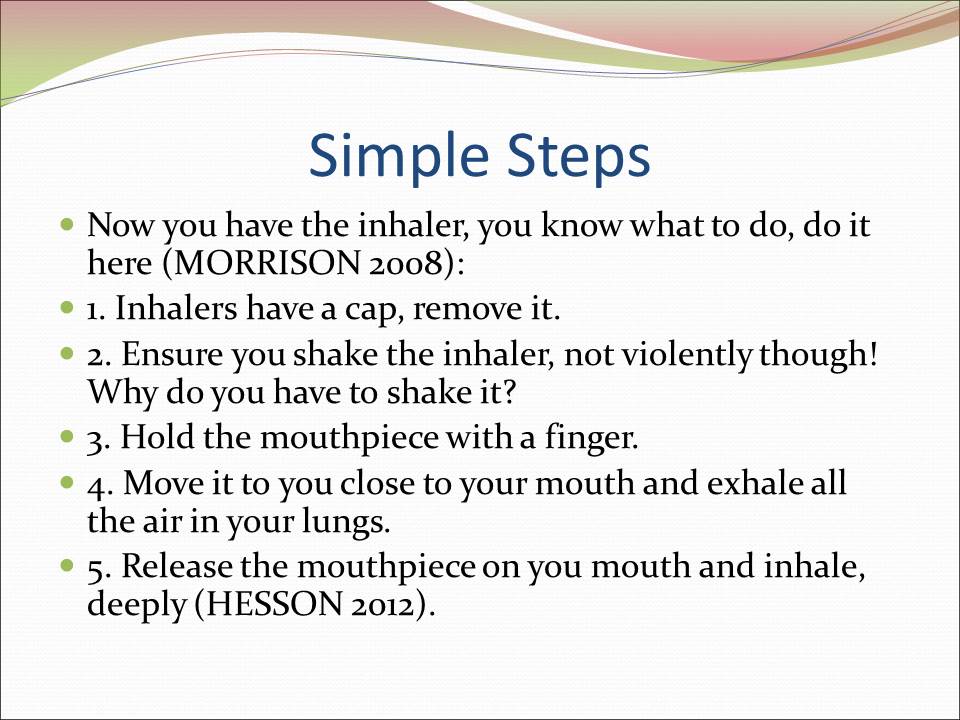
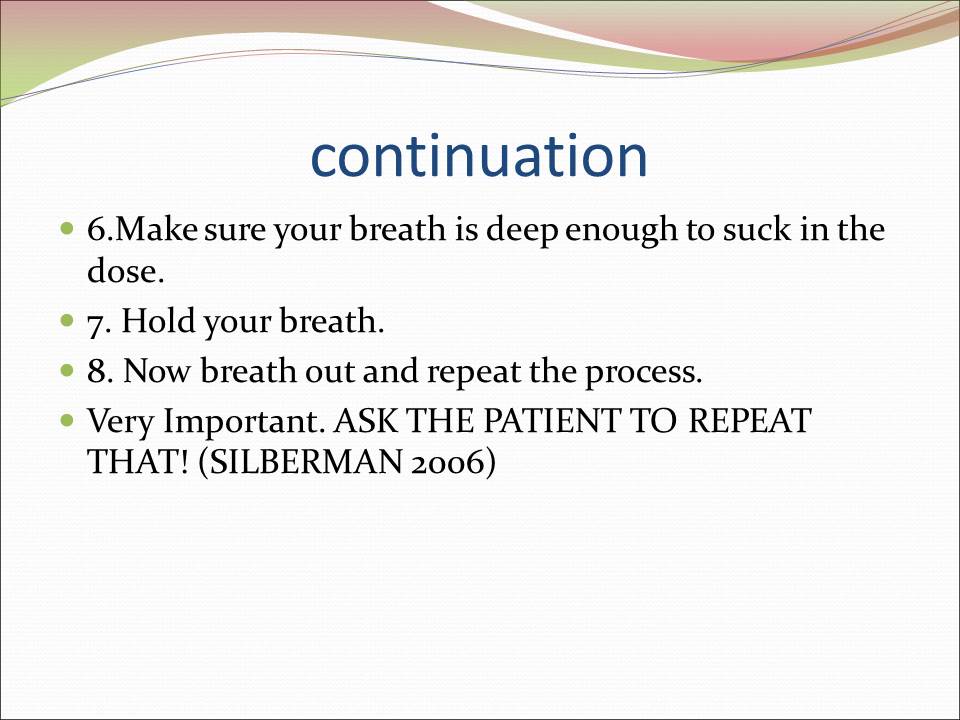
References
CONTE, C 2009, Advanced techniques for counseling and psychotherapy, Springer Pub. Co, New York.
CREVELING, C. M., SLUTSKY, J & ANTIS, D 2003 Design for Six Sigma in technology and product development, Prentice Hall, Upper Saddle River, N.J.
GARG, A., & ALIÓ, J. L 2011, Strabismus Surgery, Jaypee Brothers Medical Pub, New Delhi.
HESSON, J. L 2012 Weight training for life, Wadsworth/Cengage Learning, Belmont, California,.
KOBAK, J. B 2002, How to Start a Magazine And Publish It Profitably, M. Evans & Company, Lanham.
MORRISON, J. R 2008, The first interview, Guilford Press, New York.
PERRY, A. G., POTTER, P. A & OSTENDORF, W 2013, Clinical nursing skills & techniques, Guliford Press, New York.
POLLAK, A. N., & GUPTON, C. L 2002, Emergency care and transportation of the sick and injured, Jones and Bartlett, Sudbury, MA.
SILBERMAN, M. L 2006,Active training a handbook of techniques, designs, case examples, and tips, Jossey-Bass, San Francisco, CA.
WITTMAN, K 2011, Functional movement: practical therapeutic exercise for peripheral joint range of motion, S.l., Orthoverse.